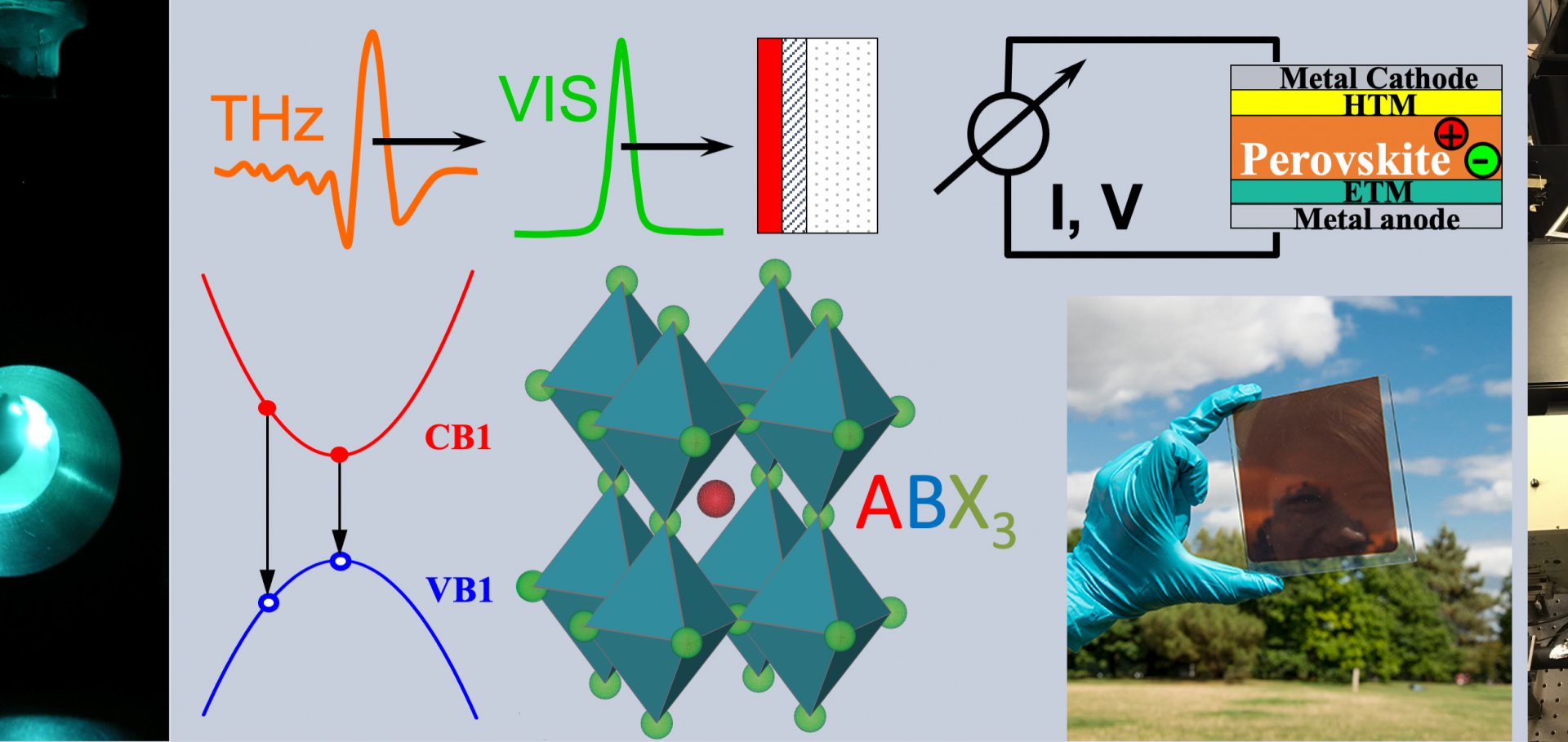How lattice dynamics moderate the electronic properties of metal-halide perovskites
Journal of Physical Chemistry Letters American Chemical Society 9:23 (2018) 6853-6863
Abstract:
Metal-halide perovskites have emerged as highly promising semiconductors with excellent optoelectronic properties. This Perspective outlines how the dynamic response of the ionic lattice affects key electronic properties such as exciton binding energies and charge-carrier mobilities in hybrid perovskites. Such links are shown to derive from the frequency-dependence of the dielectric function, which is governed by contributions from electronic interband transitions, polar vibrations of the metal-halide sublattice, organic cation collective reorientations, and ionic movement. The influence of each of these contributions to charge-carrier screening and carrier–lattice interactions is discussed, which allows for general trends with material composition to be revealed. Overall, this Perspective highlights the challenges and questions arising from the peculiar combination of a soft polar metal-halide sublattice interspersed with rotationally mobile dipolar molecules that is encountered in hybrid metal-halide perovskites.Publisher Correction: High irradiance performance of metal halide perovskites for concentrator photovoltaics
Nature Energy Springer Nature America, Inc (2018)
Abstract:
© 2018, Springer Nature Limited. When this Article was originally published, an old version of the associated Supplementary Information file was uploaded. This has now been replaced.The effects of doping density and temperature on the optoelectronic properties of formamidinium tin triiodide thin films
Advanced Materials Wiley 30:44 (2018) 1804506
Abstract:
Intrinsic and extrinsic optoelectronic properties are unraveled for formamidinium tin triiodide (FASnI3) thin films, whose background hole doping density was varied through SnF2 addition during film fabrication. Monomolecular charge-carrier recombination exhibits both a dopant-mediated part that grows linearly with hole doping density and remnant contributions that remain under tin-enriched processing conditions. At hole densities near 1020 cm-3, a strong Burstein-Moss effect increases absorption onset energies by ~300meV beyond the band gap energy of undoped FASnI3 (shown to be 1.2 eV at 5 K and 1.35 eV at room temperature). At very high doping densities (1020 cm-3), temperature-dependent measurements indicate that the effective charge-carrier mobility is suppressed through scattering with ionized dopants. Once the background hole concentration is nearer 1019 cm-3 and below, the charge-carrier mobility increases with decreasing temperature according to ~T-1.2, suggesting it is limited mostly by intrinsic interactions with lattice vibrations. For the lowest doping concentration of 7.2´1018 cm^-3, charge-carrier mobilities reach a value of 67 cm2V-1s-1at room temperature and 470 cm2V-1s-1 at 50 K. Intra-excitonic transitions observed in the THz-frequency photoconductivity spectra at 5K reveal an exciton binding energy of only 3.1 meV for FASnI3, in agreement with the low bandgap energy exhibited by this perovskite.Temperature-dependent refractive index of quartz at terahertz frequencies
Journal of Infrared, Millimeter and Terahertz Waves Springer Verlag 39:12 (2018) 1236-1248
Abstract:
Characterisation of materials often requires the use of a substrate to support the sample being investigated. For optical characterisation at terahertz frequencies, quartz is commonly used owing to its high transmission and low absorption at these frequencies. Knowledge of the complex refractive index of quartz is required for analysis of time-domain terahertz spectroscopy and optical pump terahertz probe spectroscopy for samples on a quartz substrate. Here, we present the refractive index and extinction coefficient for α-quartz between 0.5 THz and 5.5 THz (17–183 cm^−1) taken at 10, 40, 80, 120, 160, 200 and 300 K. Quartz shows excellent transmission and is thus an ideal optical substrate over the THz band, apart from the region 3.9 ± 0.1 THz owing to a spectral feature originating from the lowest energy optical phonon modes. We also present the experimentally measured polariton dispersion of α-quartz over this frequency range.Raman spectrum of the organic–inorganic halide perovskite CH3NH3PbI3 from first principles and high-resolution low-temperature raman measurements
Journal of Physical Chemistry C American Chemical Society 122:38 (2018) 21703-21717


